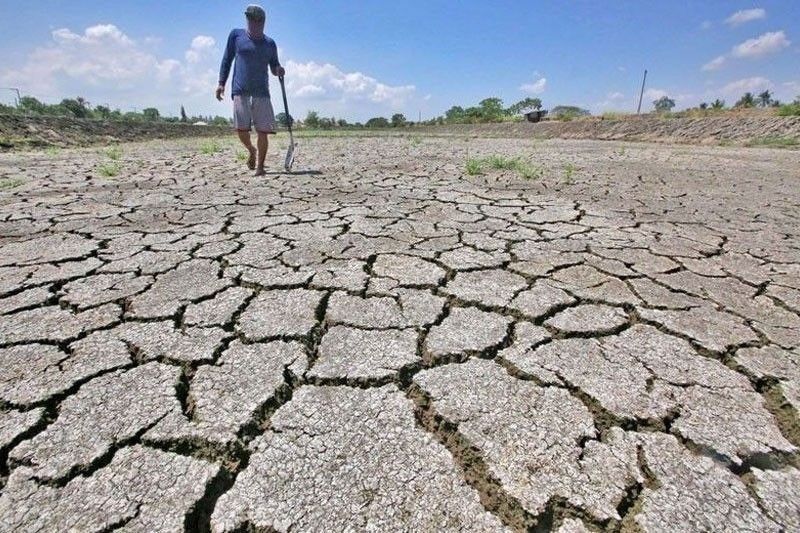8 provinces experiencing drought due to El Niño

MANILA, Philippines — Eight provinces in Luzon are currently experiencing drought amid the El Niño phenomenon, the Philippine Atmospheric, Geophysical and Astronomical Services Administration (PAGASA) said yesterday.
PAGASA said that drought was observed in the provinces of Apayao, Bataan, Cagayan, Cavite, Ilocos Norte, Kalinga, Palawan and Zambales.
Drought conditions are characterized by below normal rainfall or 21 to 60 percent reduction from the average for five consecutive months, or way below normal rainfall for three consecutive months.
The strong and mature El Niño is expected to persist until May, with transition to neutral El Niño-Southern Oscillation conditions by April to June.
El Niño, which brings warm and dry air, increases the likelihood of below normal rainfall and may bring dry spells and droughts in some areas.
Dry spell conditions have been observed so far in 19 provinces nationwide.
Provinces that experienced dry spell, or below normal rainfall conditions for three consecutive months, include Negros Occidental in the Visayas
and Basilan in Mindanao.
Abra, Aurora, Benguet, Ifugao, Ilocos Sur, Isabela, La Union, Metro Manila, Mountain Province, Nueva Ecija, Nueva Vizcaya, Occidental Mindoro, Pampanga, Pangasinan, Quirino, Rizal and Tarlac also experienced dry spell conditions.
There was also a total of 23 provinces in the country that experienced dry conditions or below normal rainfall in two months.
PAGASA said that generally below to way below normal rainfall conditions have been experienced in most parts of the country for the month of January, except for parts of Bicol and Mindanao.
El Niño damage
The damage of the El Niño phenomenon to the agriculture sector has already reached P717,500 affecting 22.25 hectares of rice areas, the Department of Agriculture reported in its latest bulletin. “The damage and losses were incurred at vegetative stages of rice,” the DA said.
DA Region 2 officer-in-charge Executive Director Rose Mary Aquino said that the DA encourages farmers to plant peanuts as an alternative crop amid the ongoing El Niño phenomenon, as the plant can survive without water.
“When we were asked to submit a mitigation plan for El Niño, one of the mitigation plans we submitted was the planting of peanuts. The only requirement of peanuts for the whole drought duration is 200 cubic meters of water. The critical period is only from vegetative to reproductive, after that it only needs sunlight. When you plant (peanuts) in January, the vegetative period is from February and early March,” Aquino said.
“Yes (we are encouraging farmers to plant peanuts) to address in case El Niño persists,” she added. “I am very optimistic with the advent of climate change, the commodity that we can tap as a replacement especially during drought time is peanuts.”
Mitigation measures
Meanwhile, the DA said it has taken several actions to respond to the impact of the ongoing El Niño.
Among these are the regular dissemination of advisories and agro-meteorological information through municipal and city agriculturists and report officers and the monitoring of weather conditions and actual ground situation.
The department has also conducted validation of vulnerable areas and identification of interventions for farmers to be affected. It has made consolidation and analysis of data such as planting and harvesting, source and status of irrigation systems.
Other actions taken by the DA include the joint area assessment before the conduct of cloud seeding operations, providing information to farmers on proper crop management during El Niño, including adjusting planting schedules and optimizing fertilizer use, and the promotion of drought-resistant crop varieties that are better adapted to the anticipated weather conditions during El Niño.
The DA said earlier that it is mapping out intervention strategies to mitigate the impact of an expected prolonged dry spell caused by the El Niño on rice production as it started the series of cluster meetings for the Masagana Rice Industry Development Program.
Around 275,000 hectares of rice fields had been earlier identified as vulnerable to the impact of an El Niño-induced dry spell, according to the DA. – Bella Cariaso, Catherine Talavera
- Latest
- Trending






























